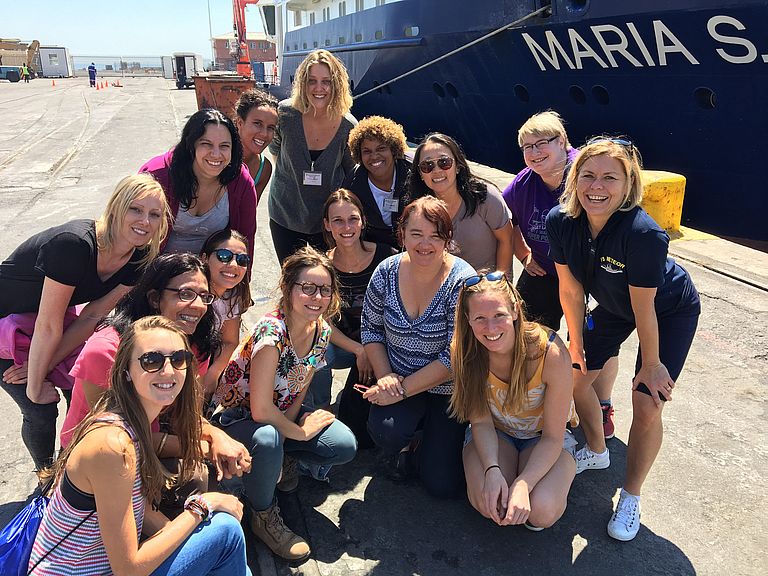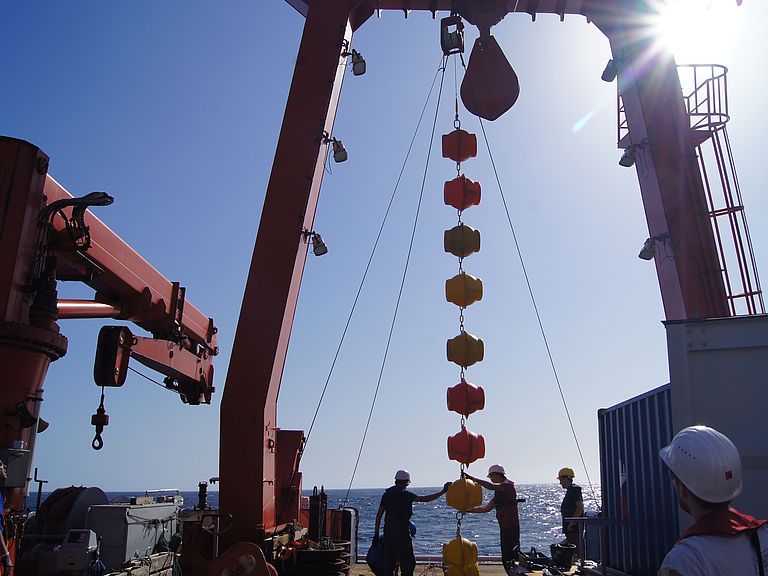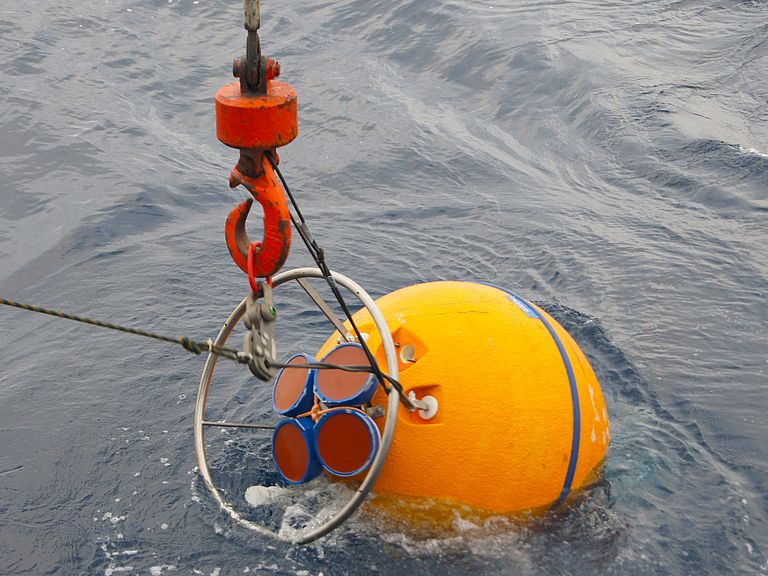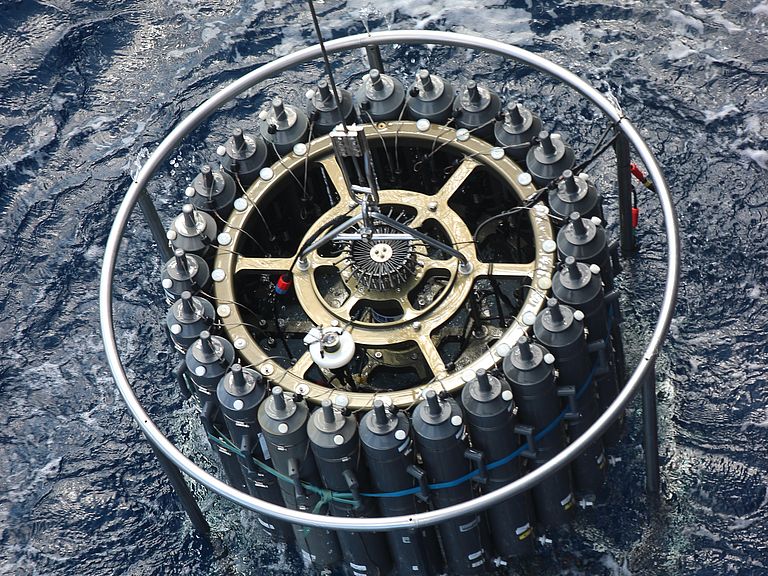How the South Atlantic influences the global ocean current system
New review paper synthesises recent knowledge about the role of the South Atlantic Ocean in the marine overturning circulation and reveals the power of inclusive science
As a global system of ocean currents, the Atlantic Meridional Overturning Circulation (AMOC) redistributes heat, freshwater and carbon around the Earth. It influences our weather and climate and drives societally relevant aspects of climate change. The South Atlantic Ocean plays a unique part in this global conveyor belt: First of all, it is the only ocean region that transports heat towards the equator – while generally heat is brought from the equator towards the poles. And secondly, only in the South Atlantic, the upper and the abyssal cells of the AMOC are prominent. In the surface layer of the upper overturning cell of the AMOC, warm and salty waters are carried northward towards high latitudes. In the far North, these waters cool, sink and flow back equatorward as cold deep water in a lower branch of the upper cell. Underneath this upper cell, the second overturning cell, called the abyssal cell, is situated. It includes the coldest and densest water masses of the world ocean, which are formed at the ice edge of Antarctica.
Scientists from Argentina, Brazil, France, Germany, South Africa and the United States of America now provide a review of research about the Atlantic Meridional Overturning Circulation (AMOC) focused on the South Atlantic Ocean. For their article published in the journal Nature Communications Earth & Environment, the author team led by the Argentinian scientist Dr. Maria Paz Chidichimo synthesised insights gained into overturning flows, interocean exchanges, as well as water mass distributions and pathways in the South Atlantic Ocean over the past fifteen years of observations.
The review article builds on research conducted in the context of the international South Atlantic Meridional Overturning Circulation (SAMOC) initiative. It was created in 2007 with the goal to monitor climatically relevant oceanic fluxes of mass, heat, and freshwater. Its members use moored arrays and ship-based hydrographic observations, Argo profiling floats, and surface drifting buoys, as well as data from global satellites. The information is used to validate and improve numerical models and climate predictions, and understand impacts of the SAMOC on climate and weather.
GEOMAR mooring data support SAMOC initiative
GEOMAR Helmholtz Centre for Ocean Research Kiel (Germany) supports the SAMOC initiative with the Tropical Atlantic Circulation and Overturning array at 11°S (TRACOS) consisting of full-depth moorings at the western and eastern side of the tropical Atlantic. “With the observations of TRACOS at the western boundary we monitor the variability of the western boundary current system, which is tightly connected to the variability of the AMOC and the Subtropical Cell, another shallower overturning cell confined to the tropical Atlantic”, says GEOMAR scientist Dr. Rebecca Hummels. “Together with observations at the eastern boundary we estimate the variability of the AMOC at this latitude and try to disentangle the role of the boundary circulation fluctuations, the wind and the interior ocean circulation on AMOC variability. Thereby we hope to understand the causes of variability patterns, which then can be used for future predictions.”
The expansion of the SAMOC observational network over the past ten to 15 years, particularly along the SAMOC Basin-Wide Array (SAMBA) line at 34.5°S and the TRACOS line at 11°S, have provided key information about the structure and variability of the AMOC volume transports at these two latitudes, as well as the structure and temporal variability of flows along the western and eastern boundaries of the South Atlantic. At 34.5°S, estimates of meridional heat transports by the AMOC and volume transports by the abyssal cell have also been made using mooring data.
Research expeditions in support of 34.5°S and 11°S moored arrays have also greatly augmented the number of full-depth hydrographic profiles available in the region. “In May/June this year we will conduct the eighth maintenance research cruise for the western boundary part of the TRACOS array, states Dr. Rebecca Hummels. “On this cruise, we will have an additional biological component in close collaboration with Brazilian scientists mainly from Recife”. The expedition with the German research vessel MARIA S. MERIAN led by Dr. Hummels starts on 11 May 2023 in Recife (Brazil) and ends on 15 June 2023 in Ponta Delgada (Azores, Portugal).
Integrative science from the beginning
The transatlantic research cruise reflects the close collaboration within the SAMOC community in general, which is highlighted in the comment article about the inclusive science in the SAMOC community, which accompanies the review article. “Already the first SAMOC executive committee equally involved scientists from the northern and the southern hemisphere, matched by an equivalent representation of gender. What should go without saying actually differentiates the SAMOC community from large research programmes and initiatives”, emphasises Dr. Rebecca Hummels, who also participated in the comment article.
According to the review article, the South Atlantic Ocean has warmed from the surface to the deep and abyssal ocean, and salinity in the upper South Atlantic has increased, while intermediate, deep, and abyssal water masses are freshening. Recent observational and modelling evidence also suggests that a reduction in the strength of the AMOC due to human-induced warming is linked to rising temperatures and salinification of the South Atlantic Ocean, which is what SAMOC scientists observe. Variations of the AMOC strength can have important societally-relevant impacts on coastal sea levels, marine heat waves, extreme weather events, and shifts in regional weather and global climate.
Original publications:
Review article: Chidichimo, M.P., Perez, R.C., Speich, S., Kersalé, M., Sprintall, J., Dong, S., Lamont, T., Sato, O.T., Chereskin, T., Hummels, R., Schmid, C. (2023): Energetic overturning flows, dynamic interocean exchanges, and ocean warming observed in the South Atlantic. Commun Earth Environ 4, 10 (2023). https://doi.org/10.1038/s43247-022-00644-x
Comment article: Perez, R., Garzoli, S., Hummels, R. Ansorge, I. (2023): Inclusive science in the South Atlantic. Commun Earth Environ 4, 11 (2023). https://doi.org/10.1038/s43247-022-00646-9
NOAA’s Atlantic Oceanographic and Meteorological Laboratory Web Story: "SAMOC initiative advances understanding of the South Atlantic’s unique role in global overturning circulation"
Project funding:
European Union’s Horizon 2020 research and innovation program under grant agreement no. 817578 (Süd- und Tropischer Atlantik – klimabasierte Studien mariner Ökosysteme für nachhaltiges Management, TRIATLAS)






